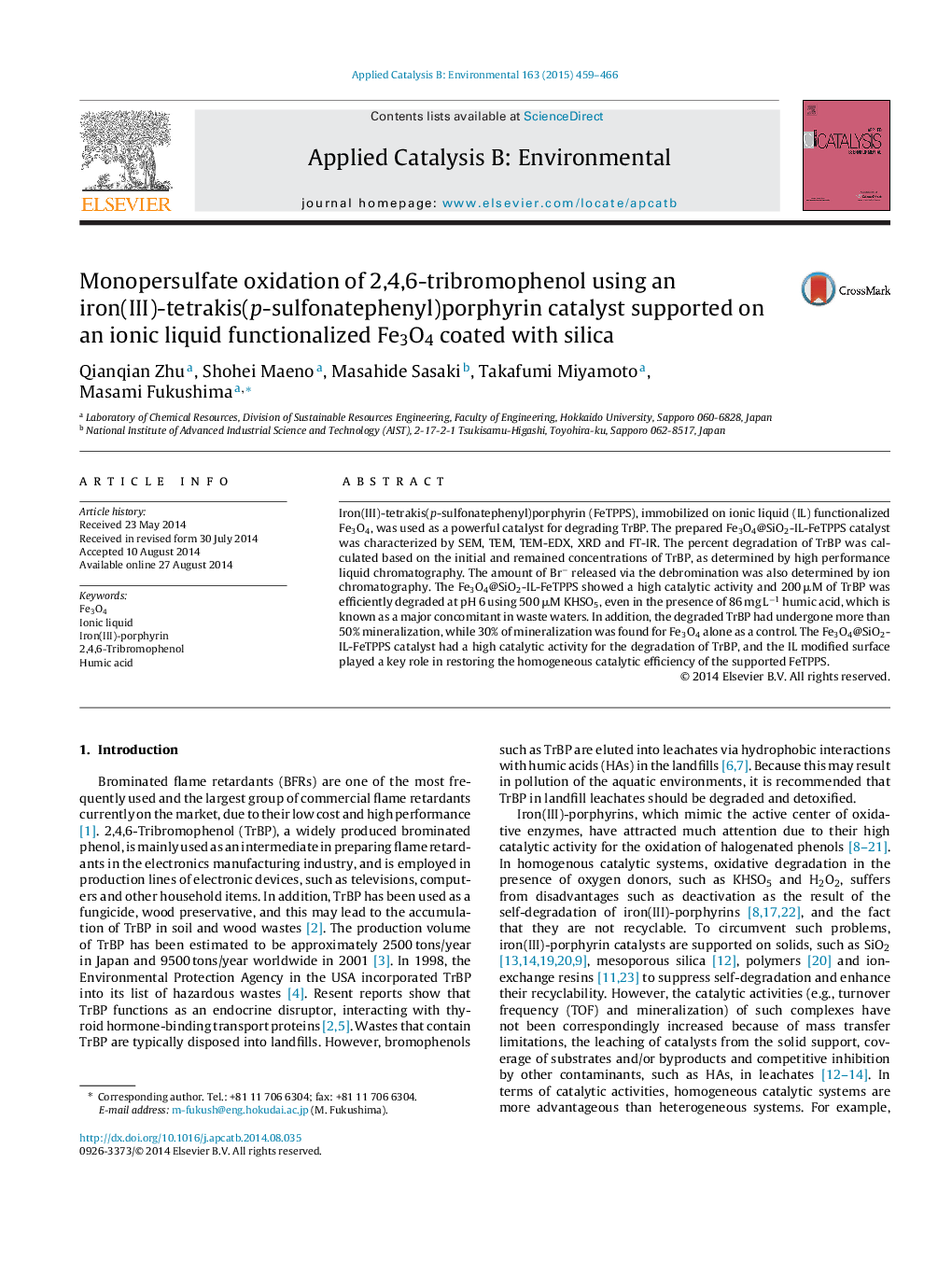| Article ID | Journal | Published Year | Pages | File Type |
|---|---|---|---|---|
| 44899 | Applied Catalysis B: Environmental | 2015 | 8 Pages |
•The FeTPPS catalyst was supported on IL functionalized Fe3O4 to degrade TrBP.•55% of the TrBP was mineralized with the synthesized Fe3O4-IL-FeTPPS catalyst.•TrBP degradation was not significantly inhibited in the presence of 86 mg L−1 of HA.•The high activity is due to the homogeneous nature of FeTPPS in IL modified surface.
Iron(III)-tetrakis(p-sulfonatephenyl)porphyrin (FeTPPS), immobilized on ionic liquid (IL) functionalized Fe3O4, was used as a powerful catalyst for degrading TrBP. The prepared Fe3O4@SiO2-IL-FeTPPS catalyst was characterized by SEM, TEM, TEM-EDX, XRD and FT-IR. The percent degradation of TrBP was calculated based on the initial and remained concentrations of TrBP, as determined by high performance liquid chromatography. The amount of Br− released via the debromination was also determined by ion chromatography. The Fe3O4@SiO2-IL-FeTPPS showed a high catalytic activity and 200 μM of TrBP was efficiently degraded at pH 6 using 500 μM KHSO5, even in the presence of 86 mg L−1 humic acid, which is known as a major concomitant in waste waters. In addition, the degraded TrBP had undergone more than 50% mineralization, while 30% of mineralization was found for Fe3O4 alone as a control. The Fe3O4@SiO2-IL-FeTPPS catalyst had a high catalytic activity for the degradation of TrBP, and the IL modified surface played a key role in restoring the homogeneous catalytic efficiency of the supported FeTPPS.
Graphical abstractFigure optionsDownload full-size imageDownload as PowerPoint slide
